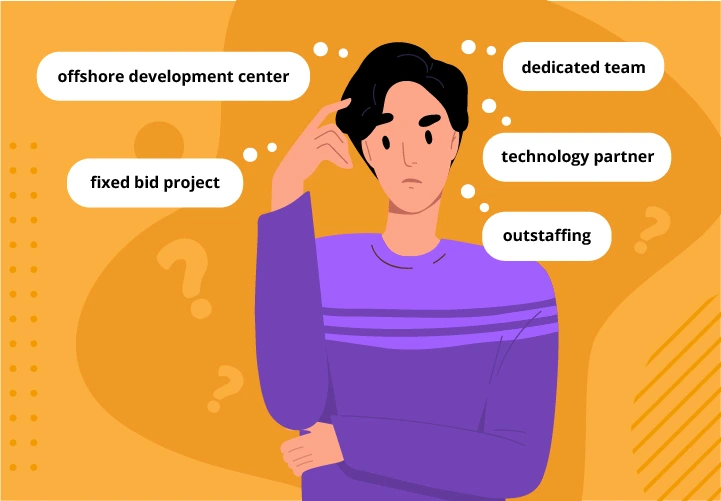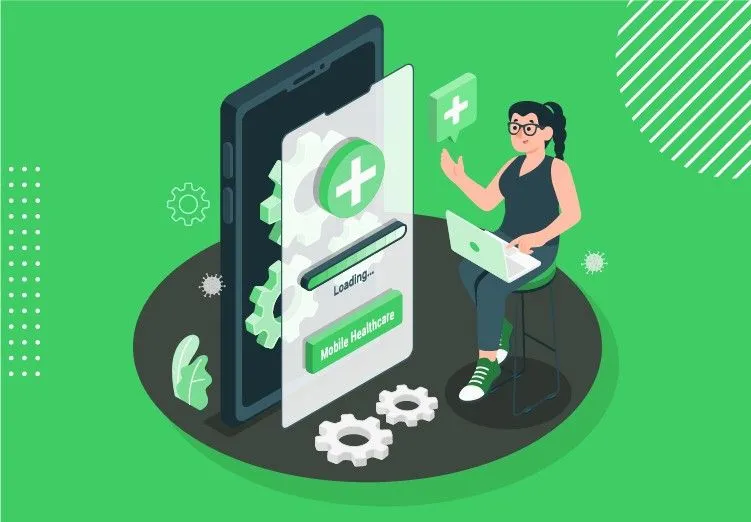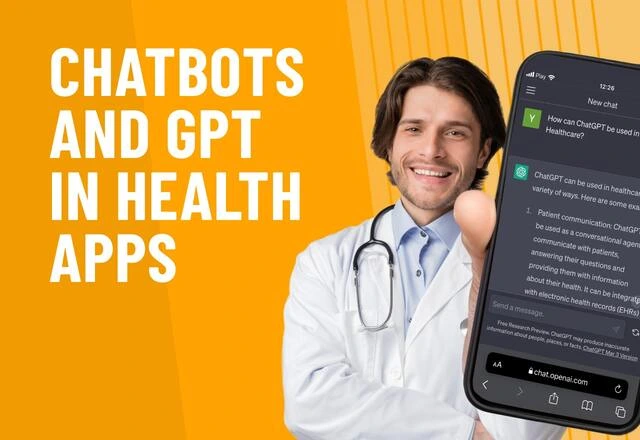Gamification in Healthcare: Increase Loyalty and Motivation Among Your Patients and Medical Professionals
Table of contents
Obtaining healthy habits is not always a pleasant trip but with the addition of gamification, things get a little more fun, easier, interesting, and joyful. Used in healthcare, be it for diet, sleep, exercise, or mental well-being, gamification becomes a rich source of motivation. And the potential benefits go even further, extending to training achievements of professionals, and business outcomes of companies that have adopted this technology.
Wonder why gamification works? Want to find out more about the benefits, look at some real-world successful use-cases, and get acquainted with the latest trends applied to it? Then keep reading.
Why Does Gamification in Healthcare Work?
What stands behind the success of gamification applied to healthcare? You already know one of the ingredients, it's motivation. But there's also a missing component — loyalty towards the subject of change.
One of the key reasons why people give up on their way to healthy habits lies in the effort vs time issue phenomenon. At the very beginning, inspired and full of enthusiasm, people tend to make large physical, motivated, and financial investments into their goal, and when the initial excitement begins to fade, people tend to give up as further investments start to seem unbearable.
So how can gamification help?
- Gamification provides a pathway to the goal with very limited investments.
- Gamification allows reinforcing new behavior on the way to reaching the goal.
- As soon as the behavior is fixed, it becomes possible to gradually increase the effort.
- Gamification covers many factors that allow for maintaining motivation, loyalty, and strong commitment.
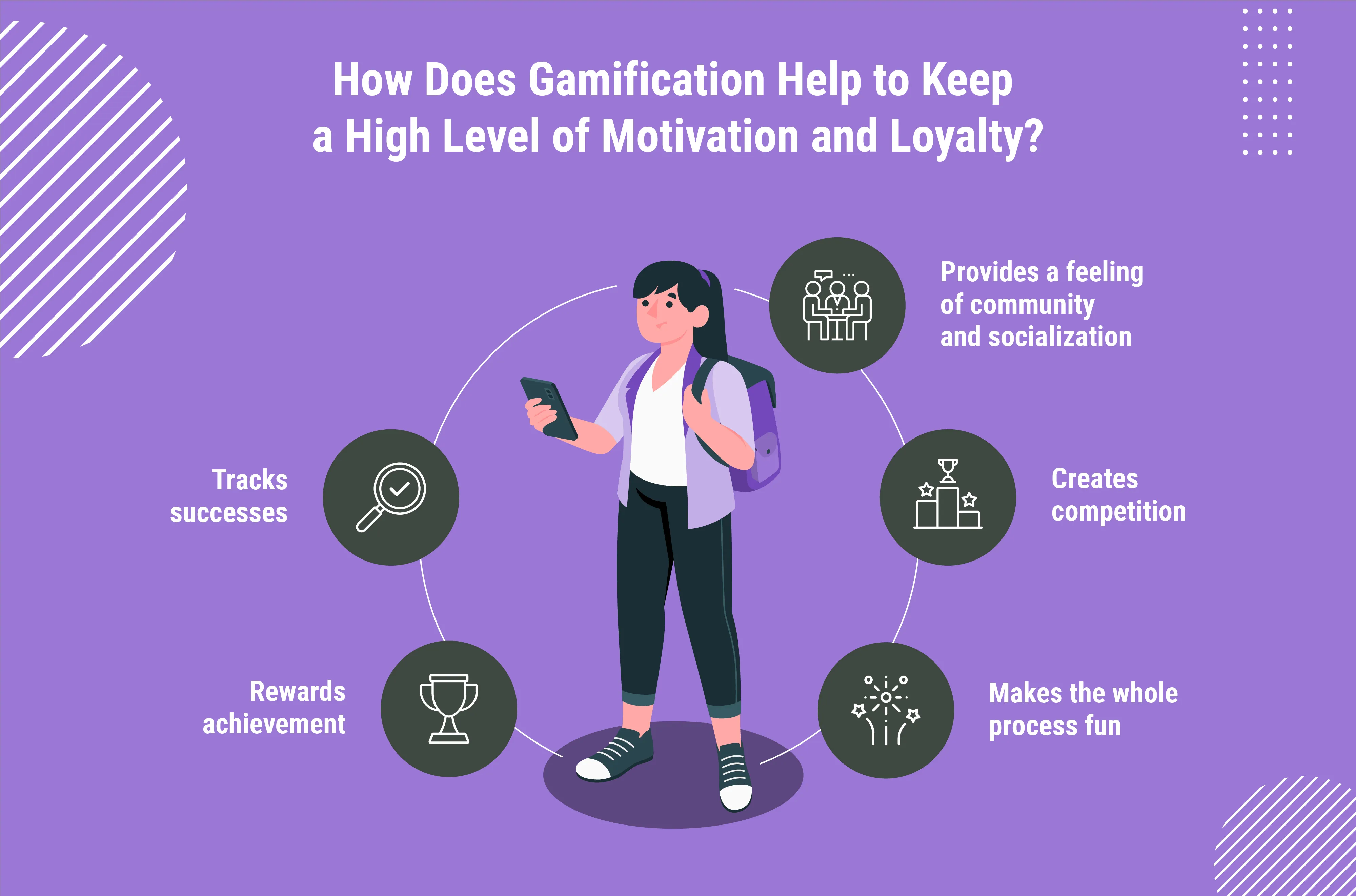
Tech solutions for healthcare that offer some level of gamification can combine many of these factors, helping users to stay on the path to achieving their goals by tapping into their instincts and strengths. Gamification in health apps, serves as both good cop, bad cop simultaneously, keeping both motivation and loyalty among users high. These are just some of the key factors leading to the success of gamification and its continued expansion throughout healthcare.
Gamification Examples in Healthcare and the Offered Benefits
We've already discussed the benefit of obtaining health habits. And while it implicitly could be imposed upon business stakeholders, let's get more direct in defining the business benefits of gamification in healthcare on the basis of real-life use cases of the technology. Here are some of the top benefits.
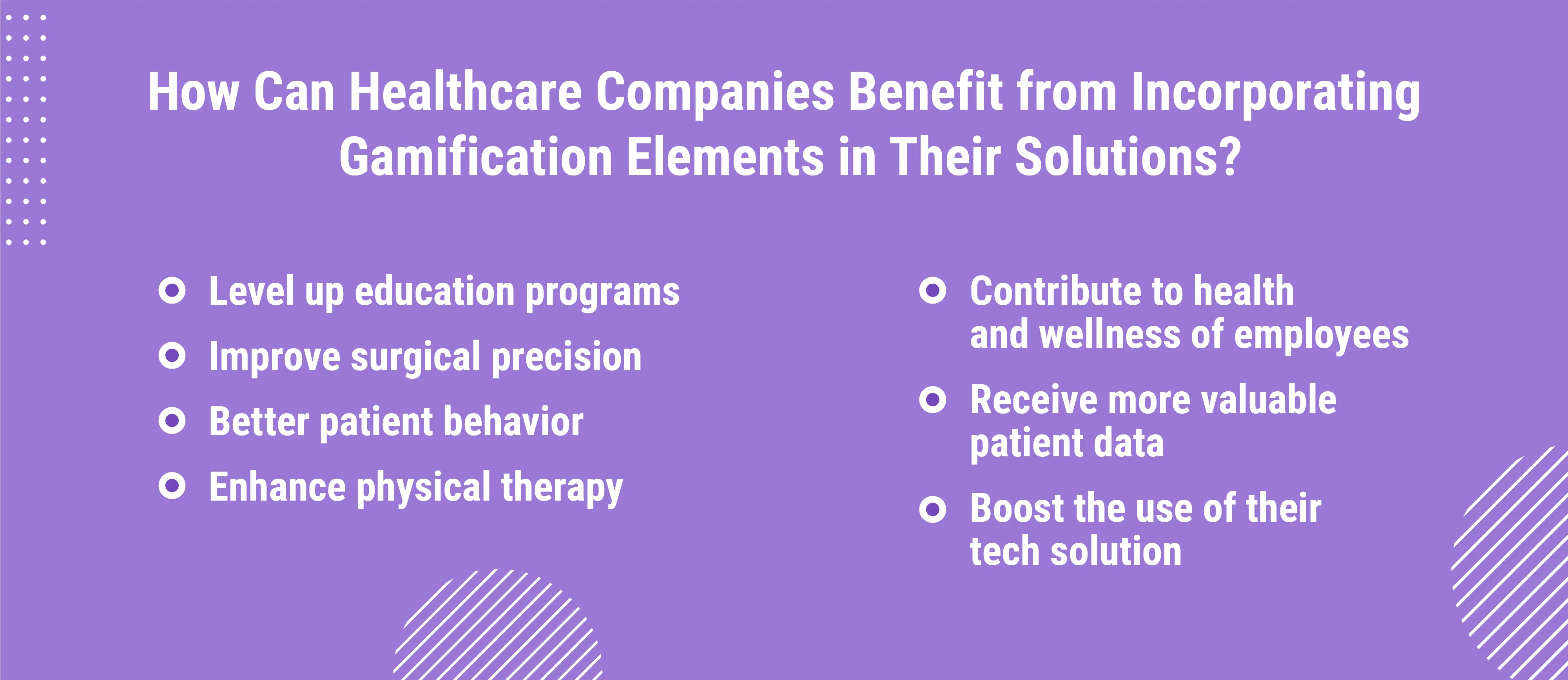
Level up education programs
According to studies at Brigham and Women’s Hospital (BWH) and the Veterans Affairs Boston Healthcare System, physicians who used online video games as their primary learning tool showed better results than their peers who were educated traditionally. Competing with one another, interns drove better results in learning information and applying it to practice. For business, it means better patient outcomes and increased trust, better productivity and accuracy of employees, and decreased costs related to the training of professionals.
Improve surgical precision
Gamification in healthcare can also contribute to more accuracy in laparoscopic surgery. According to a study conducted by Beth Israel Hospital in New York, engaging in video games allows professionals to better manage the movements of laparoscopic devices.
Better patient behaviour
The ability to positively impact patient behavior is beneficial to both patients and their doctors. Here are some examples of how these impacts can be achieved:
- A SuperBetter app that opens up heroic potential in everyone is targeted to the achievement of various goals, from weight loss to general self-improvement. It works by allowing the user to set goals, the app then tracks the progress, offering some to-dos along the way.
- Another example of gamification in healthcare is the Packy and Marlon game that helps kids manage diabetes. The effectiveness of such an approach is illustrated by a 77% reduction in the urgent care and emergency visits to clinics.
Enhanced physical therapy
Exercising is the best way to combat the risk of cardiovascular disease, especially for wheelchair users. The development of a GameWheels interface demonstrates how gamification can help to motivate patients to exercise by turning the wheelchair into a joystick. In addition to bettering the health outcomes, such solutions also contribute to increased patient satisfaction — which is of the highest value.
Health and wellness of employees
Implementing a company wellness program can make your employees more productive and healthier. For employees who aren’t currently active, forming healthy habits can be a challenge. Gamification offers an excellent supplement to a traditional wellness program, and can increase participation and long-term engagement.
Employee health can have a sizable impact on performance. Unhealthy employees take more sick days, which reduces their productivity and can cost your company money. Obese workers cost American companies 36 percent more on healthcare and 77 percent more on medication than their slimmer counterparts. This is a significant issue considering 25 percent of American workers are not active at all, and 49 percent of Americans receive health insurance through their employer.
More valuable patient data
Because a gamified healthcare app pushes users to give more feedback, it becomes a great source of patient data that allows businesses to identify trends, make better products, and improve both service offerings and their provision.
Boosted use of the app
Gamification allows users to efficiently track their journey, from booking an appointment and storing medical records to playing a game. Self-services also relieve medical staff from routine paperwork, transferring some of the offline appointments to online and freeing them to focus on helping more people.
Being a powerful tool, gamification is a difficult area. Let’s take a look at some of the do’s and don'ts of gamified app development for healthcare and explore what a modern healthcare app with gamification elements should look like.
Healthcare Gamification Market: Do’s and Don'ts
So how to succeed with a gamification app? How to ensure that the solution you deliver drives benefits for your end users and, consequently, your business? To answer these questions, let’s start by looking at what can have a negative impact on your position in the healthcare gamification market.
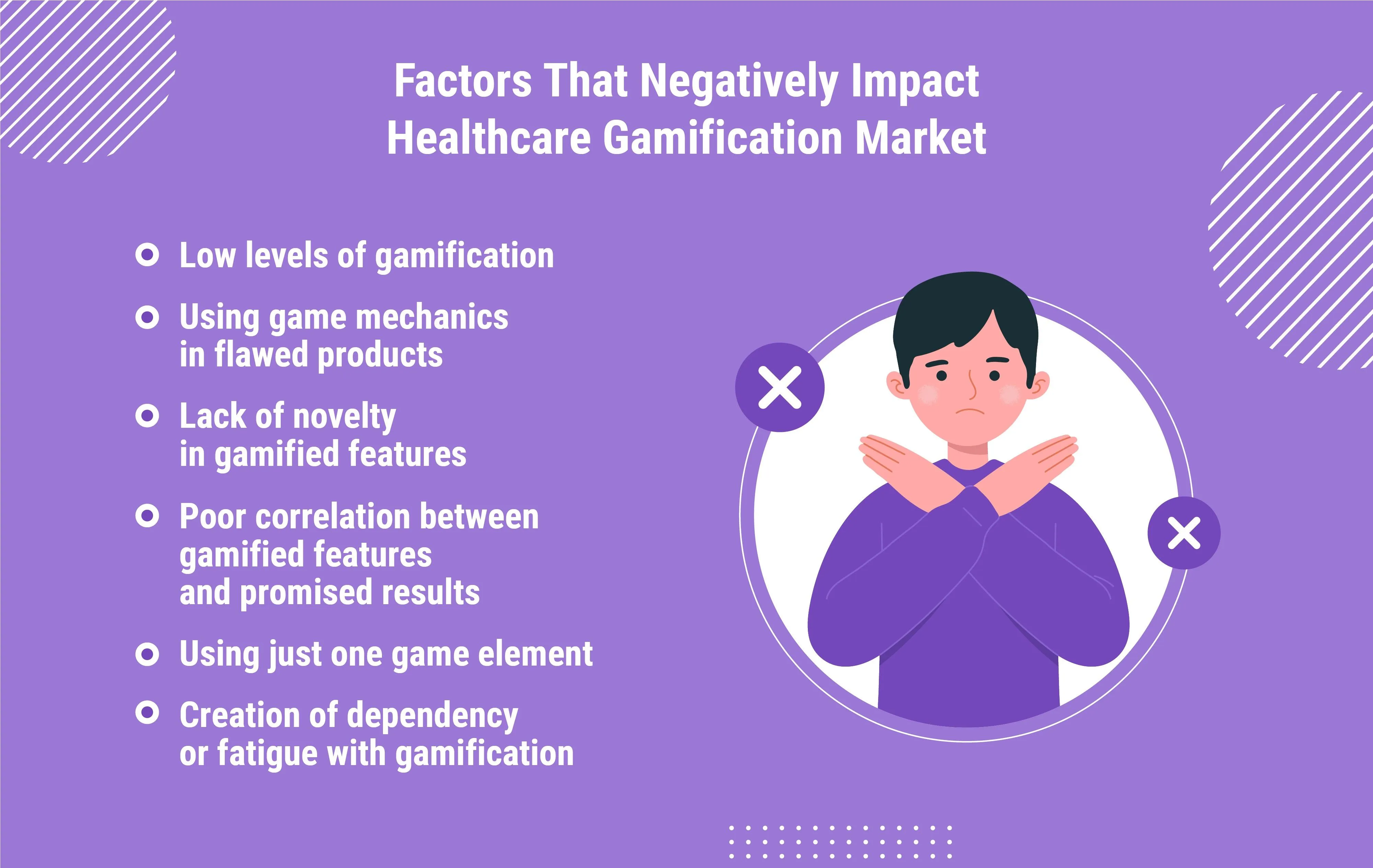
For sure, you don’t need a solution, whether gamified or not, that can ruin your reputation or just become a waste of money. So how to address these issues to ensure the positive impact of your gamified solutions? Here are some pieces of advice from Emerline.
- Your idea behind the app matters. Going through all states of idea validation, from hypothesis development to market analysis, helps you ensure that the solution you invest in will be demanded.
- Apps under development need to pull users in but do not make them toxically addicted; they should be fun but also informative; they should create challenges that are achievable but not too easy to achieve.
- Adherence to gamification trends such as the use of IoT, 3D, and AR can increase the value of your app, offering users an innovative, desired, and highly enjoyable experience when using your solution.
- Your choice of the technology partner matters. Pay attention to such crucial things as the provider’s experience in healthcare, expertise in certain technologies, project cases and the showcased portfolio.
If you’re about to develop a healthcare app with gamification elements, you can always reach out to our experts for consultation (it’s free), idea validation, technology advice, price estimation — whatever is required. Backed by successfully completed projects for the healthcare industry and the development of gamified apps, we know how to pave the best way for your goals.
Any of your questions are welcomed. Feel free to ask.
Published on May 16, 2023

